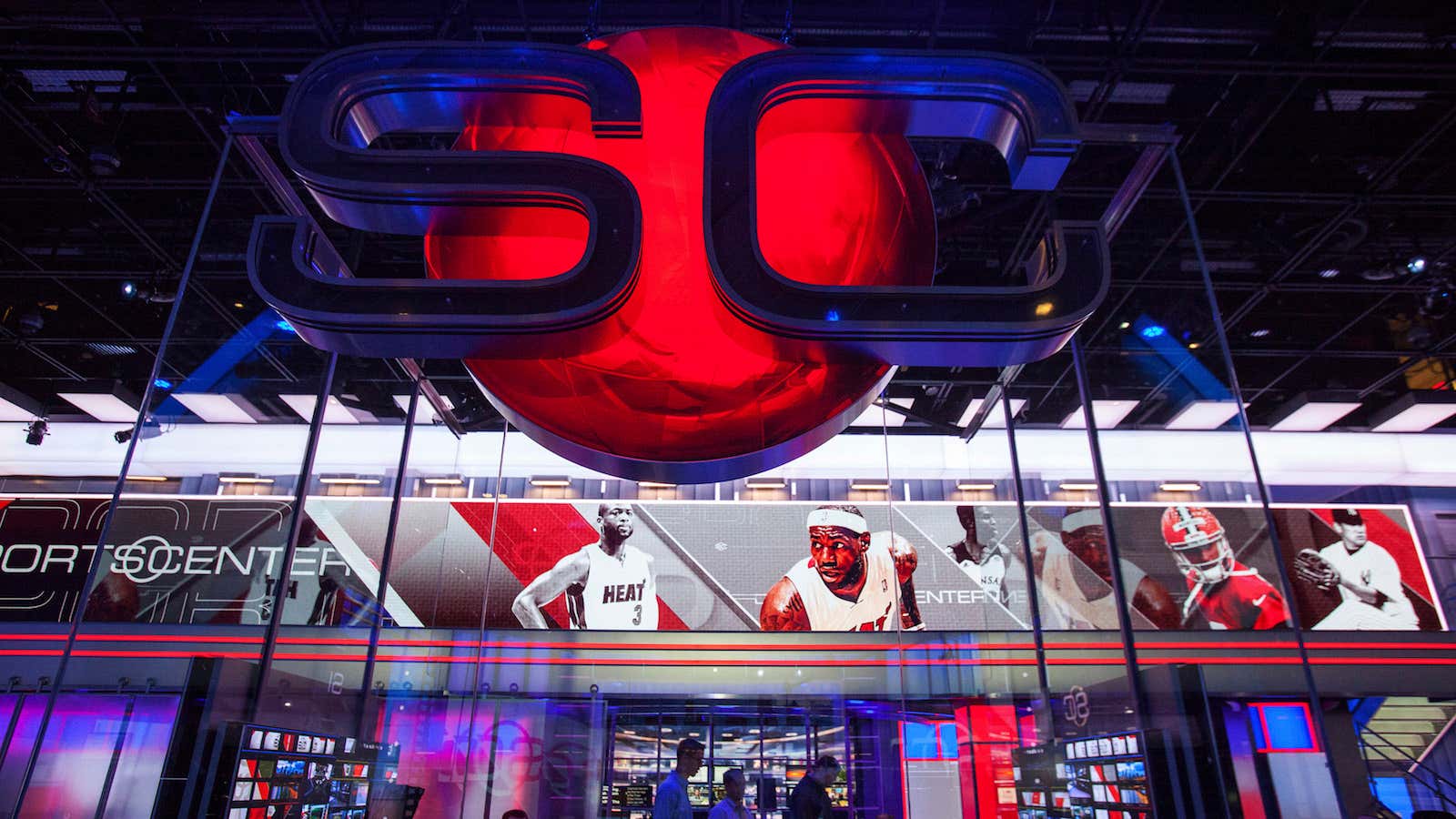Disney has its work cut out for it if it believes the future of ESPN is a Netflix-style streaming service.
In a survey commissioned by BTIG Research (registration required), respondents overwhelmingly said they would not pay for ESPN as a standalone video service.
Of the 1,600 people polled, most of whom were multichannel TV subscribers, 85% said they would not pay $20 a month for ESPN and ESPN2 if the channels were only available as a standalone service. An additional 9% said they weren’t sure. And only 6% said they would be willing to pay for the hypothetical platform.
The BTIG survey also asked respondents whether they would remove ESPN and ESPN2 from their cable and satellite packages if they could save $8 a month—the price the research firm estimates consumers currently pay for the channels, which are bundled into most basic packages. A majority, 56%, said they would cancel the service.
The survey’s results underscore the seismic shift ESPN and other media networks are caught up in as more and more people trim their cable-TV subscriptions or dump them entirely in favor of watching content online. Channels like HBO and Showtime have responded with standalone online video subscriptions in a bid to retain viewers. Currently, ESPN is only streamable online on the digital WatchESPN platform and as part of SlingTV’s $20 streaming package.
Disney CEO Bob Iger believes ESPN will eventually be sold directly to consumers and has repeatedly said the ESPN brand is strong enough to move to any platform. That may have been true in the past—ESPN regularly ranks as the top cable network in terms of brand value and importance to viewers—but the BTIG survey paints a different picture about the demand for such a standalone service.
In reality, BTIG analyst Richard Greenfield says ESPN will have to charge far more for a standalone service than the $20 monthly fee posed in the survey. If 15% of the 115 million TV households in the US subscribe to an ESPN direct-to-consumer offering, as the survey indicated, the rate of $20 a month will yield about $4 billion in revenue a year, Greenfield calculated. Currently, ESPN and ESPN2 bring in $9 billion through distributors like Comcast and DirecTV, he said. A standalone service could also make legacy distributors less willing to dole out the high fees they currently pay to carry the network.
Pricing will also depend on how many cable and satellite subscribers ESPN loses overall, venture capitalist Eric Jackson told Quartz. The sports network has lost roughly 7 million over the last two years, falling to 92 million, as subscribers cut ties with cable.
“The big concern is there are no signs that the trends we’ve seen in the last couple of years in terms of the cord-cutting are going to stop anytime soon,” Jackson said. “Nobody knows when that trend will bottom out.”
